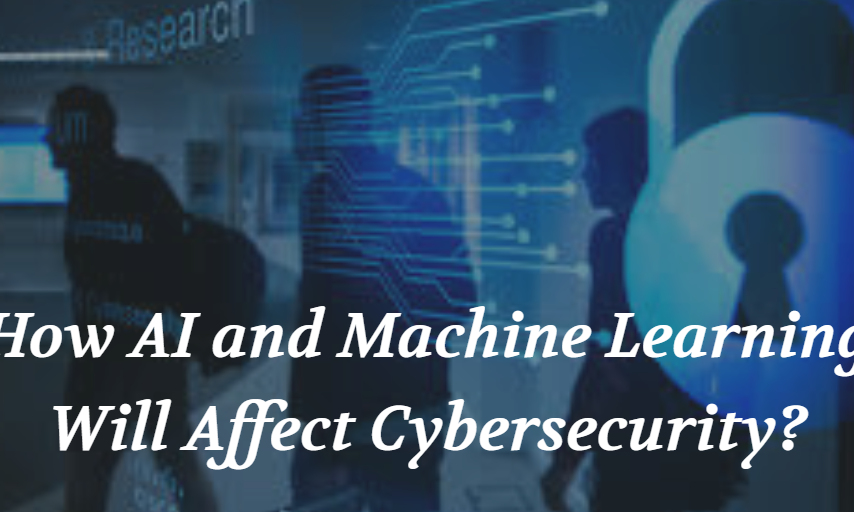The rosy future is about to come! Without technology making several advancements in artificial intelligence, machine learning, virtual reality, do you think the internet would have matured by now and worked out all the kinks? Probably not! Like it or not, we are marching forward, and these techs are going to stay inevitably changing the way we live and conduct businesses.
Even these techs being at the infant stage, there is no denying in the fact that it has proven its efficiency in performing routine tasks in a broad array of industries like retail, manufacturing, healthcare, education, Cybersecurity, and the list goes on! Speaking of which, the following post emphasizes on how AI and machine learning will affect Cybersecurity in the upcoming years.
Now let’s spot the difference between AI and ML
Both are gaining momentum slowly and steadily; that’s the reason why more and more companies are seen adopting the tech at a large scale. Now Artificial Intelligence and machine learning is a complex field, It has several nuances to it, most of which no one really talks about and that’s why people or more importantly companies end up having a wide range of perceptions of what they really are. However, without making the water muddy, let’s delve into the details. One should always remember artificial intelligence and machine learning cannot be interchanged. Moreover, you can consider machine learning as a sort of offspring of artificial intelligence.
Artificial intelligence– This tech is said when machines carry out tasks that are not pre-programmed and in such a smart way! For example, imagine a computer that can play chess. Don’t get baffled by messing this example up with a chess computer featuring countless situations pre-programmed and performs the given solution or somewhat a chess computer that analyzes the position of the pieces and calculates the outcome for every possible move many moves ahead. The first is executing commands. The second is using artificial intelligence.
Machine Learning– In simple words, it is more like an algorithm which fed enough information and has the potential to recognize patterns in new data and to learn to classify that new data based on the information it already has. Primarily, these algorithms teach the machine how to learn. An apparent danger in this method is that if the machine is allowed to accept its own assumptions to be true, it may stray from the path the developers envisioned.
Some of the best use cases of AI and ML
I am pretty sure you have seen a plethora of AI/ML examples in your day to day lives. Some of you might have recognized as such while other royally ignore. One of the best examples is the Autofill, a tool accustomed in the search engines, SMS messages, chat applications- this was something next to impossible without machine learning as it suggests what your next word is likely to be.
Apart from that, self-driving cars, voice recognition, image analysis, and medical devices feature a rare combination of machine learning and artificial intelligence.
Another interesting example is taken from the recently released movie, Spiderman- far from home we saw the AI in Tony’s sunglasses taking a physical form of AI tech and has a nickname: EDITH, or Even Dead, I’m the Hero. EDITH auto-identifies everyone in its immediate vicinity as well as has the potential to controls a weapons system connected to a satellite that houses drones. Following voice commands, EDITH can deploy drones to take out targets. Pretty cool, isn’t it!
At present being used in Cybersecurity!
With the sudden increase in security breaches day in day out, these tech seems to have stepped in making Cybersecurity more proactive than reactive. Computers and other devices are getting smarter and keeping us all safer as a result. But the question is, how?
1. Pattern Recognition– Expecting your AI system to add a strong layer of defense is not so big deal these days, all you have to do is turn on the system. Machine learning is much about taking data from the past and using it to your benefit in the future. So make sure you feed your AI algorithms for months and months of activity logs in order to achieve competence at identifying anomalies and threats. Technically speaking, they start by using all this information to set a baseline of normal performance and calculate new events from there. At the same time, these patterns help the machine learning system to recognize a hacker or a threat to the system.
2. Cloud integration– The cloud computing movement seems to have completely revolutionized how businesses are seen operating on the web. Instead of hosting servers and equipment in local offices or small data centers, systems seem to have been shifted to cloud platforms like Amazon Web Services or Microsoft Azure. Call it a new hype, a blessing, or a curse, companies no longer need to worry about physical hardware but must be facing the trust issues of storing all of their critical data in the cloud. The only drawback here is it generates a new range of potential threats and vulnerabilities. You can find more details on integration here.
Now, how AI and ML come to the rescue! With these emerging techs watching over the system, businesses of all sizes can secure their cloud environments and protect against the most typical means of malware penetration. Well, if you are wise enough, you won’t take the word of your cloud provider that they have top-of-the-line security in place on the.
3. Human interaction – Many of you think that the need for human input seems to be entirely eliminated- all because of AI and machine learning technology. Well, this can never be the case even if you have the strongest AI cybersecurity tools that exist still require collaboration with the human world.
On the contrary, machine learning systems are getting better at natural language processing and trend analysis, but at the end of the day, humans can still do a better job of interpreting spoken and written text. This adds a great deal of value when trying to synthesize the reports that AI generates.
In a nutshell,
There are no excuses; it’s just the bottom line! And AI and ML can aid us to a great extent when it comes to cyberattacks.








